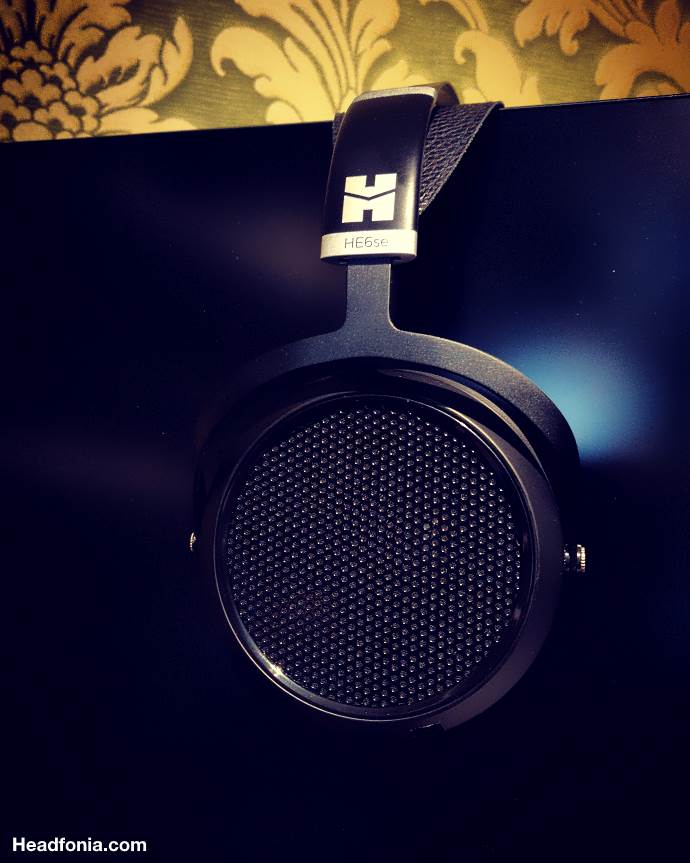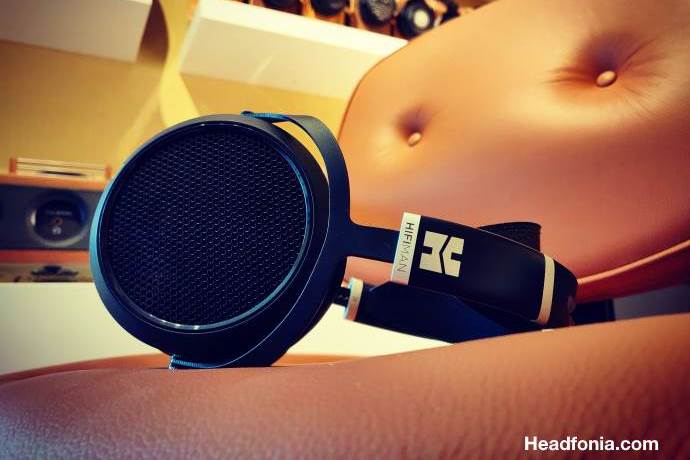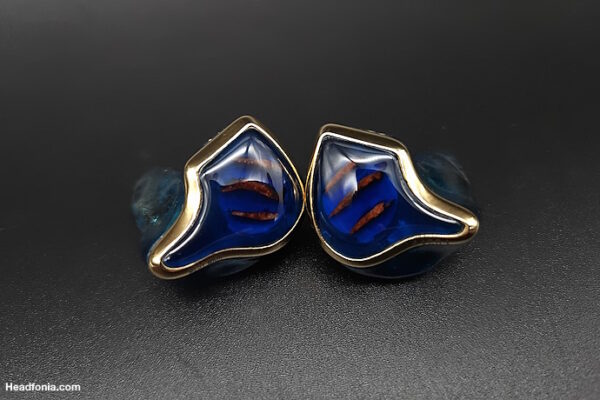The Sennheiser HD800 probably has been the HE-6’s biggest or most direct contender over the years. It was released one year earlier back in 2009 already, and like the HE-6, the HD800 still is a reference headphone today.
The HD800 is known as well for it’s linearity, balance, detail, spaciousness and super wide sound stage. These headphone are very much alike and different at the same time. The Sennheiser’s presentation is a bit softer in the mids and the bass impact of the HE6SE (when properly driven) is bigger. The HD800 is the most linear and the most analytic of both headphones, and the mid spaciousness compared to the HE6SE is even wider. I prefer the bass, mids texture, musicality and decay of the HE6SE over that of the Senn. Each headphone has its strong points, so it will come down to what you prefer hearing. But definitely two legendary headphones you should ever have owned.
The Audeze MX4 probably is the most neutral Audeze headphone in my collection. When coming from the HD800 or HE6SE to the MX4 you really have to adjust to the typical sound of the MX4, they’re just so very different. Compared to the HE6SE the upper mids and vocals are more forward and less natural. The mids presentation, and also the bass and treble, is less spacious. The MX4’s sound stage is less width and the MX4 just can’t compete with the HE6 when it comes to sound stage width, depth, layering, texturing and naturalism. Once your ears and brain have adjusted to the MX4 everything is ok, but when coming straight from the HE6SE, the MX4 just sounds wrong because of the mids tuning.
The Meze Audio Empyrean is a reference headphone without doubt but it can’t be called a neutrally tuned headphone by far. The Meze combines body, bass impact, texture, energy, warmth and extension to deliver an incredibly well, detailed and high end sounding musical flagship headphone.
That means the Empyrean isn’t as linear, balanced and precise as the HE6SE but it makes up for it with it’s addictive and musical sound. It’s hard not to tap your foot with the Empyrean and it’s an exceptional headphone, just different. It’s high end musicality vs reference neutrality.

Hifiman’s own HE-1000SE is a lot closer to the Empyrean than the HE6SE is. Both the Empyrean and the HE-1000SE are great high end all-rounders but between both the HE-1000SE is the one which is most neutral and linear. At the same time the HE-1000SE is very musical, and it’s much smoother, warmer and softer than the HE6SE. Of course the HE-1000SE is technically strong but the HE6SE takes it even a level further. The HE-1000SE is far easier to drive and much easier to like and enjoy. For sure the big crowd will prefer the HE-1000SE over the HE6SE, but the HE6SE still is the best technical neutral headphone. The HE6SE’s tuning just is more neutral and less smooth/soft. The HE-1000SE sets you back almost double what you pay for the HE6SE, but you do get the best of both worlds.
Portable Sources
Of course the HE-6 and HE6SE weren’t designed to be driven by portable players, but let’s just try and see what happens.
Astell&Kern’s KANN CUBE was built to drive full sized headphones, so why not put it to the ultimate test by hooking up the HE6SE to its balanced output. The result is actually quite nice and the CUBE manages to drive it both in medium and high gain. The sound is musical, clear and engaging and it shows good body from bass to treble, but compared to a full sized amp, the sound isn’t as tight, detailed and layered. The technicalities just aren’t as good.
Bass quantity is good but it’s not as tight and it’s not fully under control. The mids don’t have the timbre, layering, and spaciousness of a full sized desktop amp and the treble section isn’t as magical. While the CUBE is powerful and makes the HE6SE sound more fun than high end, it’s not close to how it can and should sound from a decent desktop sized amp with over 2W/channel.
Cayin’s brand new N6ii in balanced mode puts out 0.53W/channel so it on paper isn’t up to the task. In reality it’s doable, as in, you can get it to play loud but it doesn’t sound particularly special or good, especially when you know how the HE6SE is supposed to sound when properly driven.
The Sony WM1Z in balanced mode puts out only 250mW/channel and that is noticeable as you have to max out the volume to get to a normal listening level. The performance is just ok, so let’s not spill time looking at DAPS that can’t drive the HE6SE and start with the full sized desktop amps.

Amplifiers
Tubes
The “chosen one” for the HE6SE after a lot of testing is the Auris Audio Nirvana, and the above description of sound was done with that amplifier, so there’s no need to repeat that here.
The Nirvanas’ big brother still is the Headonia, and that one actually is the most neutral sounding tube amp of both. The Headonia is rated at 3W (Nirvana is over double at 6.5W) so it’s just under the recommended Hifiman level but the result actually is very nice.
With the Headonia you get a more neutral tuning, with great balance and linearity. Compared to the Nirvana it actually has even more microdetail but it also has a less body from bottom to top. The layering is excellent here and both the sound stage width and depth is really good. The big difference is a bit of tube warmth, timbre and decay which are better/more present with the Nirvana, making it more engaging/musical.
Don’t get me wrong, the HE6SE sounds absolutely great from both amps. If you want the most neutral and linear sound, the Headonia will be your best friend. If you want more timbre/texture and a little more body, the Nirvana is the one you want for your HE6SE.
The AudioValve Solaris is a do it all amplifier on tubes and you can hook up electrostats and speakers to it all at once. With the HE6SE you do have to flick the gain switch but he result is quite nice. The Solaris and HE6SE combo sound very energetic, but the upper mids and vocals are more forward and voices can sound a little sharp at times. The HE6SE sounds pretty flat and balanced, the body overall is lighter and the bass impact isn’t the biggest. Unfortunately bass isn’t the tightest with the HE6SE and that for me is a combo killer.
More on amplification and the conclusion can be found on the Fifth Page of this review. Click HERE.








cfranchi
Hello Lieven,
I have HE6se and after owning for years several headphones and IEM, HE6se is my true house sound and a TOTL that I will certainly never sell.
I’m considering HD800s as a complement of HE6se (for acoustic songs, well recorded live songs, some Diana Krall songs, etc) because of the acclaimed HD800s soundstage. However I never fell that HE6se soundstage is missing and it can sound big if necessary.
So for you, is HD800s a good option for me regarding its soundstage? I guess that in other sound aspects, HE6se will be a winner.
cfranchi
In other words, does HD800s soundstage provide a unique listening experience compared to HE6se or the difference is not that big?
Lieven
Well the HD800 is extremely wide and spacious. So yes. But wouldn’t you rather get a completely different complementary headphone?
cfranchi
For me 800s is already very different from He6se 🙂
Also I’m finding that I tend to be a balanced / clear headphone guy
cfranchi
What would be your suggestion ? I want to keep my budget and 800s used can be find easily